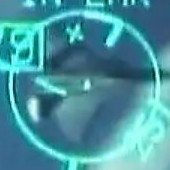-
Posts
1976 -
Joined
-
Last visited
-
Days Won
1
Content Type
Profiles
Forums
Events
Everything posted by wilbur81
-
It may not be stuck. I just watched the QAG take 14 minutes to load a 10 unit mission on the Marianas Map. You might try it again and just let it sit for 10 - 20 minutes to see if it eventually loads. As for this new feature, it's garbage at this point. Anyone who's ever used the ME or the "create fast mission" generator will find this new feature frustrating and absurdly limited at best...
-
Agreed. It doesn't help that it freezes and crashes every other launch for me. It just feels like a clunkier version of the Mission Editor, but with fewer options. I think the ME is awesome and that the old "create fast mission" generator was different enough to warrant its existence, too. But as for this, I will likely never touch the QAG again.
- 37 replies
-
- 11
-

-
I'd really love to have the old "create fast mission" feature back. The new QAG is not quick, and it is way too much work to not be the full-fledged ME. I used the old one to create somewhat random "surprise" missions with lots of units. It was not perfect, but it was indeed fast and gave us the option of instantly creating a mini-scenario with lots of ground and air units. So far, the new QAG is just a paired down version of the Mission Editor... Maybe I just need to wait for the bugs to get squashed, but I'd love to see the Create fast mission generator stick around as an option. I find the full-on Mission editor itself to be awesome and plenty quick enough to create the more specific scenarios that the new QAG is currently providing.
- 37 replies
-
- 14
-

-
Agreed. I'm only really interested in saving, say, my Raven One Campaign mission mid-ingress and coming back to it tomorrow after some normal life interruption.
-
You're speaking nonsense. The Hornet has multiple internal fuel tanks, along with every other aircraft ever designed. Additionally, Vipers (along with Hornets) almost never deploy on combat missions without external tanks. There are anecdotes out there that speak of Viper squadrons that essentially never take off the two external wing-tanks.
-
Interesting report. What source was this article from?
-
Doesn't matter whether "you care" or not... you can still mount a TGP on the Hornet's centerline pylon with excellent results.
-
Yes you can...LITENING.
-
Indeed... and it looks fantastic.
-
On GS's server, your Viper opponents will: a.) Load up 6 AMRAAMS b.) accelerate to Mach 1.5+ c.) climb to 40K+ ft d.) kill you.
-
It would be really nice to get a "Sun bloom" or "HDR" slider added to options. Not sure if this is real, but since upgrading to Windows 11 from 10 two weeks ago, I find the sun glare when the sun is lower after (3p-4p(ish) and on to sunset) in-game to be almost overwhelming...washing out everything around it. It is affected in the cockpit directly by zoom. Zoom out, it gets much worse...zoom in, it looks a lot more realistic. I will post tracks/screenshots when I get a chance...but it is pretty over the top. I play with gamma settings between 1.8 and 2.0 during daylight simming.
- 18 replies
-

Dcs should become more keyboard and mouse friendly
wilbur81 replied to mrbluegame's topic in DCS Core Wish List
I think you should get a cheap stick with a throttle lever at a garage sale...don't spend more than $20. -
"Marked as Solution."
-
Just curious - what is your gamma slider set at? I usually keep it at 1.8 - 2.0 for daytime flying...however, at night I usually have to slide it up to 2.3-2.7 in order to get a realistic look.
-
"For four days straight, we went out and smoked them." Chuck Magill on killing the Eagles at Tyndall who underestimated the F/A-18A.
-
"[In a Hornet], I won 50% of the fights against the F-16...I never lost a 1v1 against the F-15." Seriously, Steve's 10 Percent True podcast is an absolute treasure trove of fighter aviation conversations.
-
"What are looking AT!! HUH!?!"
-
It will not... much later addition.
-
Nonsense...
-
As it absolutely should be.
-
Haha... funny one, Metzger. Indeed... DC was the most significant footage in that video, I'd say.
-
Indeed. And on Fat Amy, I suppose it's perfectly feasible that a foreign-NATO customer of the 35A has contracted ED's commercial side to do some sort of MilSim as USAF did with the A10C. That would certainly open the door wider for them to consider an off the shelf civilian product. It will be interesting for sure... BUT, the Albino Charlie!
-
A mark of wisdom...
-
SO pleased to see the visible progress on the Dynamic Campaign front! Well done, ED Team!


